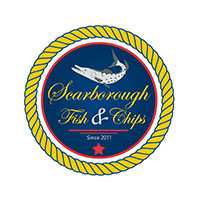Welcome >> This Is Langkawi Nature Park

CONNECT WITH NATURE
At Langkawi Nature Park
The Beauty of Mangrove Trees
Due to changing tides--that vary according to season--mangrove habitats are not only "ever-changing" but also extremely hostile. Having evolved over millenia, mangrove trees have adapted to thrive in its harsh environment that includes vary tidal and salinity levels, temperature and anaerobic conditions.
While these adaptations include waxier leaves and raised network of roots, there are also species-specific adaptation including "perspiration" or excretion of salt and vary propagule or seed design.
Most importantly, mangrove forest absorb extreme weather conditions such as hurricanes and typhoons. A lesser-known benefit--something that occurs over centuries--would be the impact its roots traps and bind soils to help land grow.
Between tides, guests may observe a varying degree of lifeforms in the mangroves that include mud skippers, kingfishers, crabs, macaques, birds of prey and a variety of reptiles. Even if one may not spot many lifeforms, one will most certainly enjoy the natural sounds created by insects and birds in the background.
Mangrove Boardwalk
Completed in 2018, Langkawi Nature Park's boardwalk stretches a total of 800m. It starts at the far end of the Park's recreational / zoological section to LNP's jetty along the Kilim River. Our mangrove forest covers at least 35-acres and, while there is a housing estate on the other side of the Kilim River, there are no known plans for development in the immediate vicinity.
Langkawi Nature Park Mangrove An Eagle Habitat at the End of the Boardwalk A leisurely walk along the boardwalk and back will take about 45 minutes. Shorter, if one opts for a more robust or brisk walk. Bicycles are available for rent within the Park although cycling on the boardwalk is subject to visitor load factors.
The boardwalk is open to visitors between 12 noon and 7PM, with the last entry permitted at 6PM.
Naturally-occurring Mangrove Fauna
If one has a keen eye, one may be able to spot a variety of fauna within the mangrove forest that includes woodpeckers, king-fishers, kites, sea eagles, migratory owls, hornbills, leaf monkeys, macaques, leaf snakes, tree vipers, crabs, mud lobsters, mudskippers and a variety of other sealife.
A Greener Mangrove Study Alternative
There isn't a need for motors or generators on the boardwalk, meaning that a leisurely mangrove walk is "greener" and has a softer footprint--if any--compared to motorized mangrove boat tours. with no mechanical noises in the background, one will be able to appreciate the peace and tranquility of a mangrove forest.
Plus, a brisk walk--or a bicycle ride--is "good exercise."
Early-bird Programs
Early bird-watching programs are available on request albeit subject to the availability of our bird-watching guides. For more information on these specific programs, kindly contact us for more details on these programs.
More to Come...
...
>>> NEXT PAGE: ZOOLOGICAL PARK FEATURES
Revised January 5, 2024
>>> Top of Page






